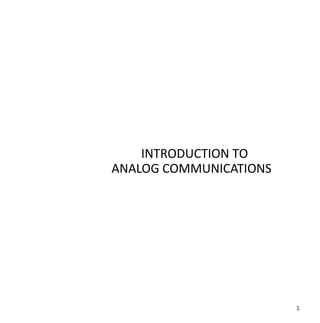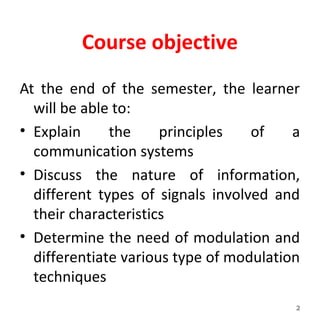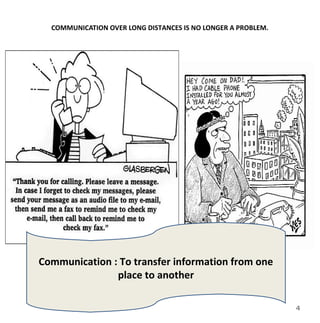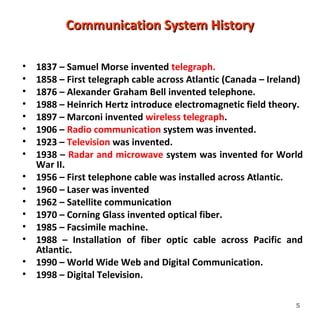The document provides an introduction to analog communications. It outlines the course objectives which are to explain communication principles, discuss signal types and characteristics, and differentiate modulation techniques. It then discusses the history of communication systems from the telegraph to the modern internet. The basic components of a communication system including the transmitter, transmission medium, receiver, and their functions are described. Finally, it covers topics such as analog versus digital signals, bandwidth, frequency spectrum, propagation techniques, and decibels.












































